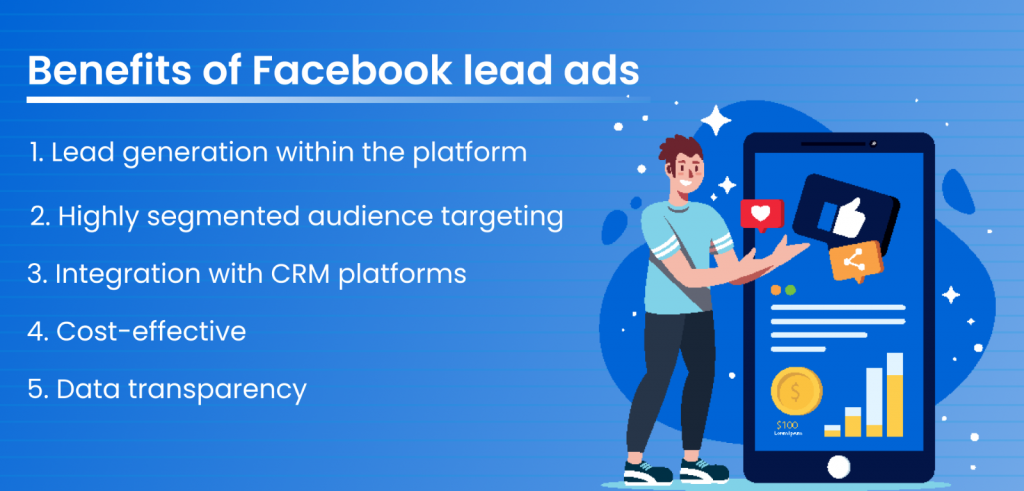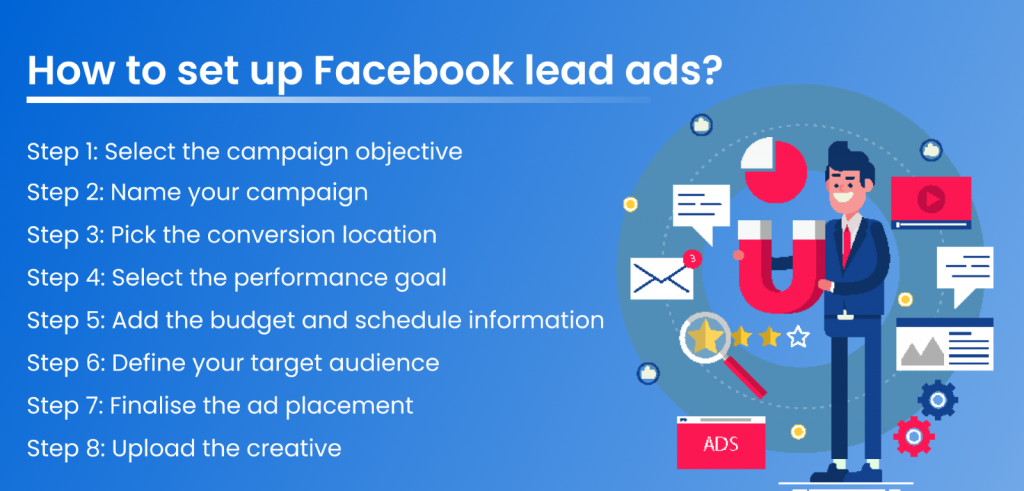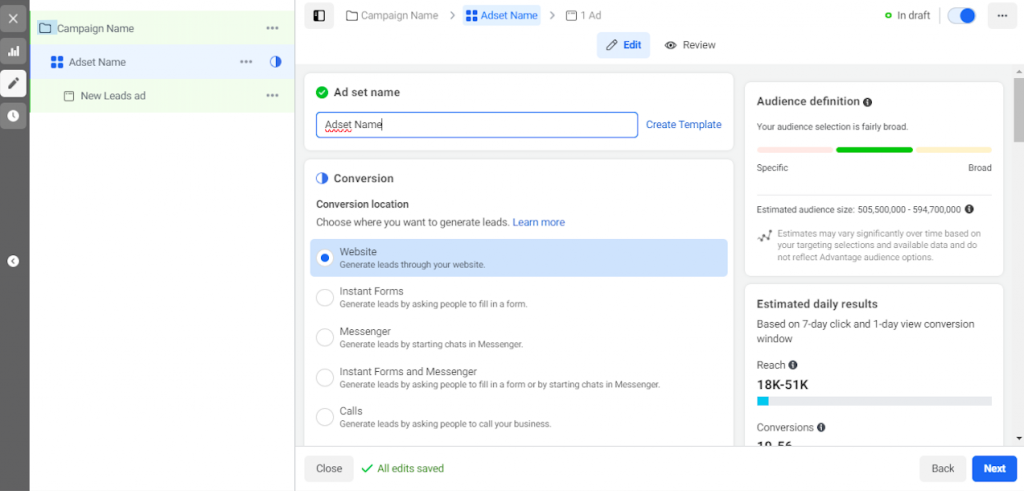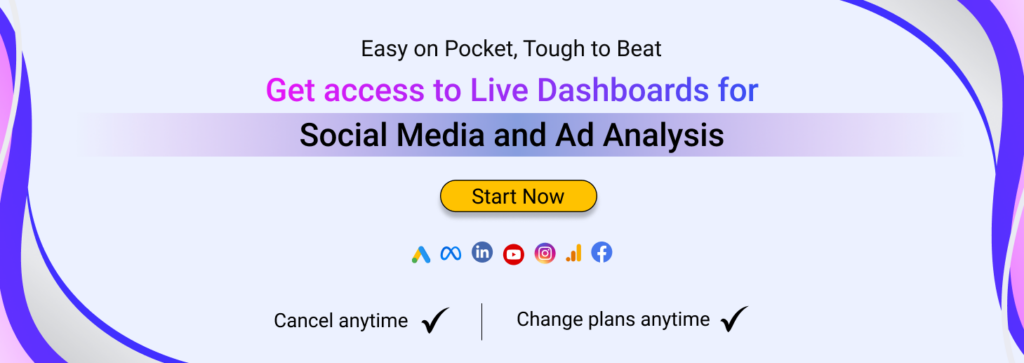As a marketer or a budding entrepreneur, one of your top priorities is lead generation. That’s probably why 53% of marketers spend at least half their budget on it. However, that doesn’t necessarily mean you’re getting satisfactory results. You can also read Facebook Statistics to know more stats about Facebook.
So, how can you make the process of customer reach out as simple and cheap as possible?
The right answer is by running Facebook lead ads in the US and other countries on your target. Such ads help consumers share their information with a simple tap only and eliminate a multi-step process of redirecting them to an external landing page. What’s better is that Facebook fills some part of the form information from pre-saved data, thus making the whole process even simpler.
In this blog, we will deep delve into the world of Facebook lead generation marketing and how you can start creating your own lead ads. So, let’s get started:
Facebook lead ads allow marketers to collect consumer information like name, email address, or phone number without leaving the platform. Such ads are great for capturing leads that might only be mildly interested in your products or services.
Launched in 2015, lead ads were specifically made to be mobile-friendly and improve conversion rates by reducing friction in the lead generation process.
Facebook lead ads work in three simple steps:

What’s the usual way of getting leads? You run an advertisement, direct it to your website landing page, and hope the user is still interested enough to fill out the contact form.
Sounds a bit lengthy, right? (and you’re probably losing a huge number of consumers somewhere before the final step!)
To make this process easier, you can run Facebook lead-generation ads. Here are some of the notable benefits of doing so:
Convinced enough to give lead ads a chance? Let’s see how you can proceed with the Facebook lead form setup process.

Getting started with Facebook lead ads is a simple process if you’re already familiar with the Ads Manager tool. (If not: head to our How to Advertise on Facebook guide.)
Facebook Ads Manager is an all-in-one tool for creating, managing, and tracking your ad campaigns. Not only does it allow a marketer to create ads, but also choose their audience, set campaign objectives, and test which ads perform better.
Here are the steps to follow for setting up Facebook lead-generation ads:
Head to Meta Ads Manager and you will see your ads dashboard. Click on the Create button in the top-left corner.
Meta Ads Manager offers a total of 6 objectives for creating different types of Facebook ads. From this list, click on Leads, and then Continue.

Select Manual Leads Campaign. You will now be able to name the campaign and set a budget.
Here, you can also create A/B tests or select special ad categories from the drop-down list.

Once you’ve named the campaign, it is time to select the conversion location. You get multiple options like:
To create Facebook lead forms, you can select the ‘Instant Forms’ option.

When creating a campaign for lead generation, Facebook allows you to select the performance goal that matches your end goal. You can choose between:
Also, ensure that you have selected the correct Facebook page.

When do you want to run lead ads and how much money are you willing to spend?
Depending on the answer, set an average daily budget limit (needless to say, the more you spend, the better the results).
Also, enter the end date for the campaign. Doing so will help save money in case you forget to manually switch off the ads.

If you’ve been running Facebook lead ads before, you will have a list of curated audiences ready to use. If not, you can create a new one.
Target audiences can be built based on different factors like location, gender, age range, and language. Additionally, you get detailed targeting options like interests, demographics, behaviours, placements, etc.

With the ad placement, you can decide where the ad will be displayed across Facebook, Instagram, and Messenger — like feed, stories, reels, search, and in-stream ads.

Under the identity section, you can link your Instagram account. Once done, head to the ad setup and pick the format (Available options: Single image or video and Carousels).
From the ad creative section, upload the media and add other essential details like Headline, Description, and Call to Action.

Let’s jump to the last and most important step of creating Facebook lead generation ads.
Select the destination where the consumer will be redirected to after clicking on the ad. Now, click on ‘Create Form’ and enter the following details:

Voila – you’re all set to publish the Facebook lead generation advertisement and get all the required info from your consumers.
Planning to run Facebook lead ads but don’t know how to make them more impactful for your audience?
If so, here are a few tips to help you design a highly converting Facebook lead ad:
Let’s have a quick look at some of the best Facebook lead ads in action:
To make the best use of summer and get customers to sign up for a stand-up paddleboarding lesson, St. Moritz is using a visually appealing background image and an enticing ‘SUP and Breakfast’ offer.

Lead generation often runs on the core principle of give and take. Obsidian Digital follows the same pattern and creates an ad with the headline: Get 24 concrete tips for better SEO rankings.

To collect emails and contact information of all SaaS enthusiasts, Trustmary Group offers a chance to sign up for their breakfast event.

Getting tickets for an NBA game can be hectic, especially if you haven’t booked them before months.
To give their fans a chance to skip the line, the Milwaukee Bucks ran a Facebook lead generation ad and highlighted their key players like Stephen Curry and Kevin Durant.

When launching their newest model, The Coupé Crossover, Nissan captured pre-launch leads by asking consumers to register their interest.

YASH Global Consultants offer their target consumers a chance to book free consultation with their experts and get Canadian PR.

Digital advertising is a game of hit and trial in most cases. The more you experiment, the better you get at targeting audience with lucrative offers. The same is the case with Facebook lead ads.
But why should you run Meta lead ads? The straightforward answer is to be better acquainted with your audience. A Facebook lead generation form can ultimately help you collect consumers’ contact data at relatively cheaper prices.
Once your Facebook campaign for lead generation is up and running, the next step is to monitor their performance. Free Facebook ad analysis tool by Vaizle can help you do so by offering:
Vaizle now offers exclusive access to all paid features for $1 only. Sign up for the 7-day trial and explore our range of tools — including social media, ad, and competitive SM analysis. Also, try our newly launched Ads to Google Sheet connectors to make your marketing journey insightful. Cancel or change plans anytime.

Mamta is an SEO Analyst with 3 years of experience. Currently, she is spending her time on content roadmapping to drive organic growth and engagement for SaaS businesses. Mamta is also an avid cinephile who spends her spare time watching latest action and sci-fi flicks from around the world.